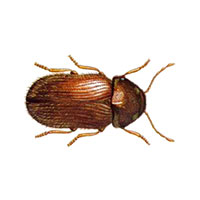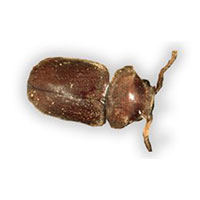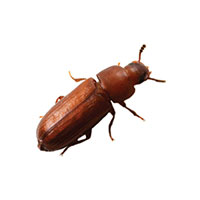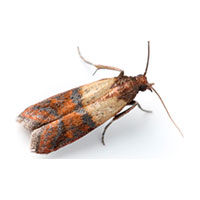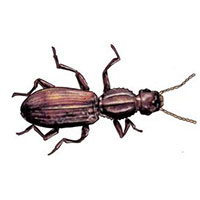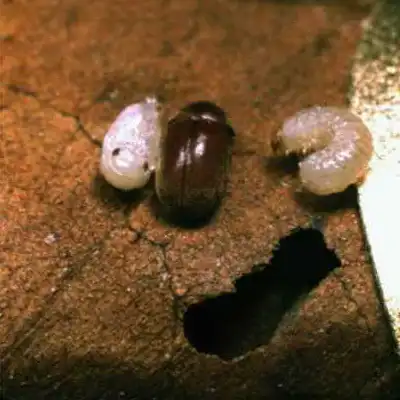
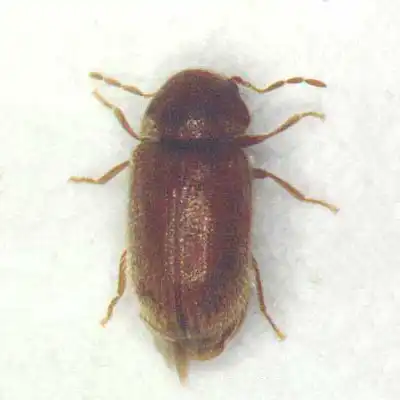
Drugstore Beetle Diet
Despite being named for their tendency to feed on prescription drugs in pharmacies, the insects are notorious for their willingness to eat anything except cast iron. While they do not favor stored grains, they will attack spices, cereals, pasta, raisins, chocolate seeds, grains, and dried plant material as well as packaging materials such as paper and cardboard. They have also been known to feed on leather, wool, hair, and books.
Drugstore Beetle Habitat
Commonly found in warm climates or heated structures. They customarily infest all types of dry stored food products, spices, seeds, grains, and dried plant material.
Drugstore Beetle Life Cycle
Eggs
Female drugstore beetles lay an average of 75 eggs in her lifetime.
Larvae
The hatching larvae are 0.5 mm long and very mobile. The larval period usually ranges from four to five months, but under favorable conditions, the development from egg to adult may occur in six to eight weeks.
Pupation
When the larvae are fully grown, pupation occurs and they remain in this resting stage for 12 to 18 days. After this time, the insects emerge from their cocoons as sexually mature adults.
Lifespan
On average, adult drugstore beetles live between 13 and 65 days. The precise length of the life cycle depends on the weather and humidity of the surrounding environment.
Drugstore Beetle Damage
The eating habits of the drugstore beetle are the most damaging aspect of the pest. Since so many offspring are produced in a single generation, infestations are capable of contaminating large amounts of stored foods. When the beetles infest commercial warehouses and other storage facilities, they can render products unusable. They are also capable of destroying priceless museum pieces.
Signs of a Drugstore Beetle Infestation
Since the drugstore beetle can fly well, the source of infestation can sometimes be hard to find. Their presence can be detected from pinhead holes in the infested items.
Drugstore Beetle Prevention & Control
Drugstore Beetle Prevention
Sanitation: Preventing an infestation requires good sanitation practices. Clean cabinets and surrounding areas regularly, and take care of spills and crumbs as soon as the mess is made.
Moisture: Ensure cabinets are properly ventilated to avoid moisture build-up.
Exclusion: Purchase insect-proof containers made of inedible plastics and accompanied by secure lids.
Rotate Stock: Rotate food supplies by eating older products and open packages first.
Drugstore Beetle Control
Removing drugstore beetle infestations is fairly simple once the attracting food source is located. Unsalvageable items should be wrapped in heavy plastic and thrown away outside of the home. They cannot withstand freezing or sweltering temperatures, putting the pests in a cold freezer or hot oven is an effective removal strategy; however, infested food items should be discarded.
If a drugstore beetle infestation occurs, count on a professional pest management service to take care of the problem knowledgeably and successfully.
Need help with Drugstore Beetles?
We'll call you! Leave your information below.
Pests Belong Outside!
Leave your information below and we will give you a call back.
"*" indicates required fields
*During normal business hours. After hours inquiries will be returned the next business day.

